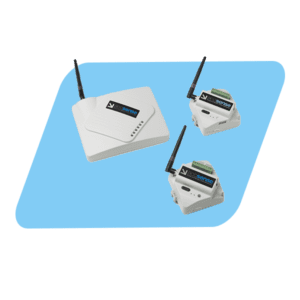How to Keep Cut Flowers Fresh & Ensure Quality
 CAS DataLoggers provided the remote flower storage temperature monitoring solution for a fresh flower supplier who needed to monitor the temperature in three remote storage sheds. Like everyone in the floral supply business, she was always expected to deliver reliably, and a single failure to keep the fresh-cut flowers cool enough could mean a missed shipment and a major loss of reputation. After harvesting, the fresh flowers needed to be kept at temperatures close to freezing yet could not be allowed to freeze or they would be visibly damaged.
CAS DataLoggers provided the remote flower storage temperature monitoring solution for a fresh flower supplier who needed to monitor the temperature in three remote storage sheds. Like everyone in the floral supply business, she was always expected to deliver reliably, and a single failure to keep the fresh-cut flowers cool enough could mean a missed shipment and a major loss of reputation. After harvesting, the fresh flowers needed to be kept at temperatures close to freezing yet could not be allowed to freeze or they would be visibly damaged.
Her product was extremely temperature-sensitive, so when the temperature in the sheds storing her inventory went out of specification, it not only ruined valuable products but also disrupted the supply chain flow, causing further shipping delays. Continuous temperature recording could help significantly in preventing losses, but the sheds were constructed of metal and located far apart, so the customer had to factor in that metal did not absorb radio signals but instead reflected them. With this limitation in mind, the customer needed a cost-effective wireless monitoring system that could work within the metal buildings and send all the temperature data to the cloud for easy storage and analysis.
Installation
The customer installed four Accsense A1-13 Wireless Temperature Data Loggers in each of her three storage sheds, placing them in the packing rooms and in the main coolers. Each sensor pod monitored the shed using an ambient temperature sensor capable of detecting a wide temperature range of -40°C (-40°F) to +70°C (158°F). The A1-13 pods were specifically designed to connect to three RTD 100 Ohm sensor inputs, allowing an increase in the number of sensors per pod and reducing the cost per measurement. This model also featured two digital inputs and could easily be connected to a wide range of digital sensors.
The wireless data loggers, with up to 90’ indoor range, were then activated, operating on either battery or AC power. An Accsense B1-06 Wireless Data Logger Gateway with built-in 10/100BaseT Ethernet was then installed for each wireless group of pods in each of the three sheds to make the online data easily accessible. Diagnostic LEDs gave a clear indication of power, wireless status, and more. Each wireless gateway could support up to 16 sensor pods and matched the pods’ 90’ indoor range (250’ outdoor).
Usage
 The B1-06 gateway sent all of the data to the cloud-based, secure servers. The Accsense cloud server’s software included a graph that showed her a high-temperature alarm period. The secure servers could also send out voice, text, or email alerts to inform the supplier and authorized staff when a temperature reading went out of range. Additionally, data sent online could be downloaded as a CSV file and loaded into most database applications.
The B1-06 gateway sent all of the data to the cloud-based, secure servers. The Accsense cloud server’s software included a graph that showed her a high-temperature alarm period. The secure servers could also send out voice, text, or email alerts to inform the supplier and authorized staff when a temperature reading went out of range. Additionally, data sent online could be downloaded as a CSV file and loaded into most database applications.
Due to the metal sheds, wireless signal transmission among them posed a potential problem, which was addressed building-by-building; the signals often simply reflected until they escaped the shed through a door seal or other discontinuity in the metal. However, the ability of the Accsense monitoring system to “mesh,” where all the dataloggers also acted as repeaters, greatly improved signal reception and transmission. To deal with the long distance from one building to the next, a directional antenna was connected directly to the B1 gateway. These commonly available antennas, used in pairs, greatly increased the range of the wireless signals, easily achieving distances of over half a mile.
Benefits
The floral supplier benefitted from installing the Accsense wireless temperature system in her fresh-cut flower storage sheds. Her new wireless system was cost- and time-effective compared to manually recording the temperature since automated monitoring was far less expensive and much more reliable while also being historically stored for future reference. The supplier could also set the system’s warning limits for a narrower temperature range if required.
A typical setting for the customer’s cut flowers was every 10 minutes, with the trigger filter set to require 3 data points in a consecutive order to be out of preset limits before the temperature alarm was triggered. If desired, the alarms generated by the system could be sent to a customized phone or email list. The Accsense system’s many programmable features also increased overall versatility in alarm settings. For example, the wireless system could check for alarms at different intervals than those used to record the data.
For further information on the Accsense Wireless Data Loggers, or to find the ideal solution for your application-specific needs, contact a CAS Data Logger Applications Specialist at (800) 956-4437 or request more information.

